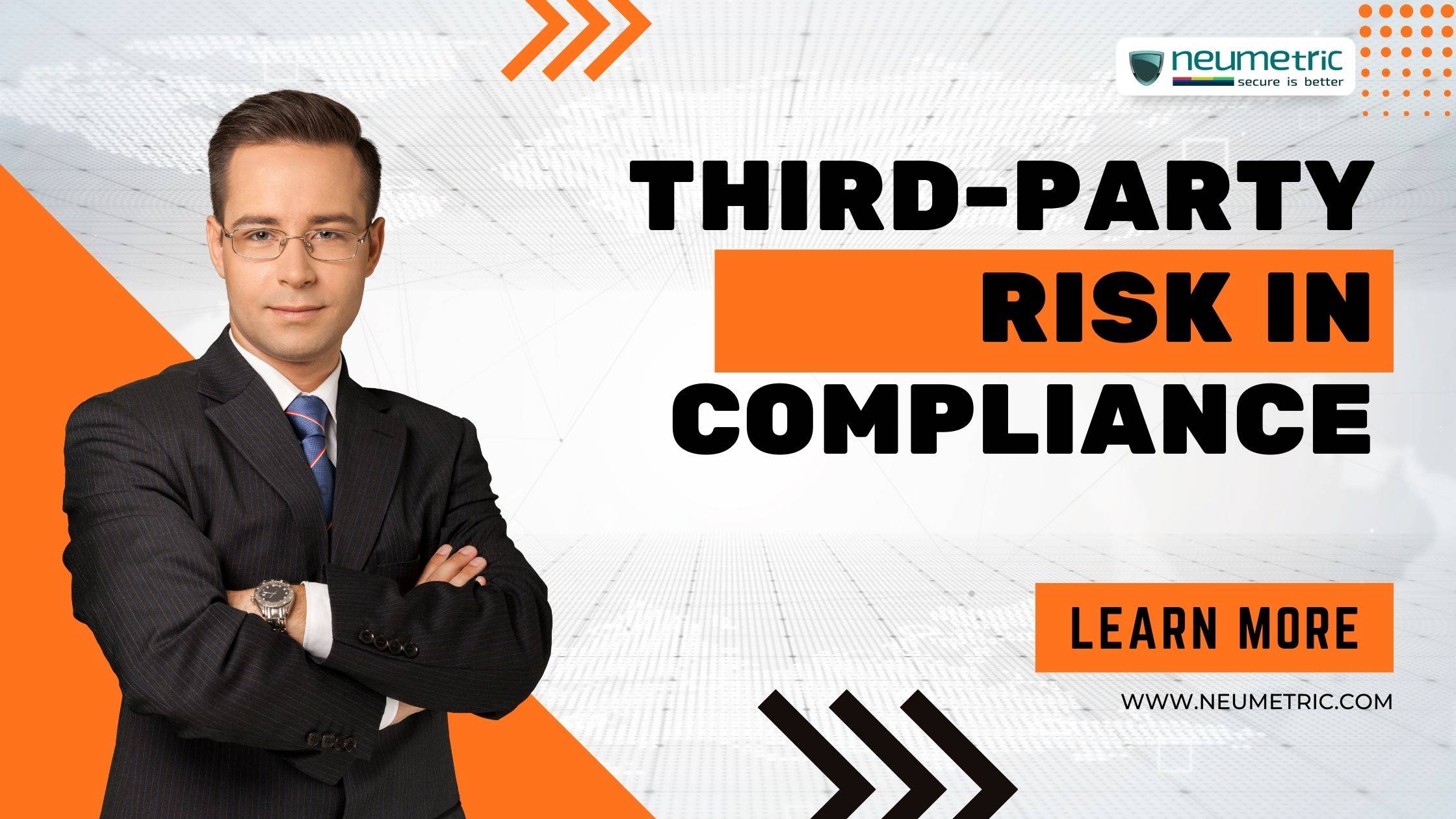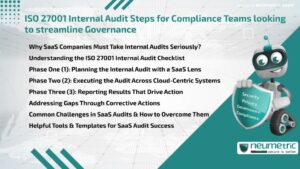Table of Contents
ToggleIntroduction
Fundamentally, third-party risk in compliance describes the possible risks & weaknesses that develop when businesses interact with other parties like suppliers, vendors, or service providers. These risks cover a wide range of difficulties that could jeopardise a company’s stability & integrity, such as operational, legal & reputational issues.
In today’s business environment, third-party risk has become increasingly significant. Companies are more exposed to possible dangers as they depend more & more on outside partners to complete different parts of their business. Globalisation, technology development & service specialisation are driving forces behind this trend, which creates a more integrated & dependent business environment. Failures by third parties can now have far-reaching effects rather than being isolated instances.
This journal’s goal is to explore the various facets of third-party risk in compliance by providing information on its definitions, consequences & strategic management. The goal of this Journal is to provide organisations with the information & tactics they need to successfully negotiate this difficult terrain by examining the opportunities & problems that come with third-party relationships. In addition to bringing attention to the growing importance of third-party risk, the goal is to offer actionable advice on how businesses may proactively manage & reduce these risks in order to protect their operations & brand.
Understanding Third-Party Relationships
Establishing a precise definition of a third party is crucial to comprehending the complexities of third-party risk. Examples include partners, contractors, suppliers & vendors in addition to outside service providers. These entities all provide different difficulties that call for specialised risk management techniques.
One defining feature of contemporary corporate practices is the widespread use of outsourcing. Organisations are increasingly assigning certain tasks to outside partners as a result of their desire for specialisation & efficiency. Due to the expansion of third-party interactions brought about by this trend, organisations now need to thoroughly evaluate & manage the risks involved.
Working with third parties brings dangers that go beyond short-term operational issues. Organisations that work with outside partners run the serious danger of losing their reputation, compromised data & operational disruptions. The first step in putting good risk management techniques into practice is realising these inherent dangers.
Data Security Risks: Sharing sensitive information with third parties may expose organizations to data breaches or unauthorized access, posing significant threats to the confidentiality & integrity of critical data.
Operational Disruptions: Dependence on external partners for critical functions introduces the risk of operational disruptions. Issues such as service interruptions, delays, or quality concerns can impact the organization’s overall performance.
Reputational Damage: The actions or failures of third parties can directly influence the reputation of the primary organization. Negative publicity resulting from a third-party-related incident can erode trust & credibility among stakeholders.
The Regulatory Landscape
Managing third-party relationships is closely linked to the regulatory environment, where meeting different expectations is both legally required & essential to risk management. The regulatory environment is examined in this section, which also clarifies important legal ramifications, expectations & the dynamic nature of regulatory requirements.
A. Overview of Regulatory Expectations
Examples: GDPR, SOX, HIPAA
General Data Protection Regulation [GDPR]: Enforced by the European Union, GDPR mandates stringent data protection & privacy measures for organizations handling personal data of EU residents.
Sarbanes-Oxley Act [SOX]: Enacted in the United States, SOX focuses on financial reporting & governance, imposing regulations to ensure transparency & accountability in financial operations.
Health Insurance Portability & Accountability Act [HIPAA]: Applicable in the healthcare sector in the U.S, HIPAA establishes standards for the protection & confidential handling of patient health information.
B. Legal Implications for Organisations
Penalties & Fines: Regulating authorities are able to apply penalties & fines for infractions. Non-compliance can have a significant financial impact & could hurt the organization’s bottom line.
Legal Proceedings: Legal actions, including lawsuits & government investigations, may follow non-compliance. Legal actions can be expensive, time-consuming & reputationally harmful to the company.
Limitations on Operations: Non-compliance with regulations may lead to limitations on specific business operations or activities, so restricting the organization’s capacity to carry out regular business operations.
C. The Evolving Nature of Regulatory Requirements
Adaptability: Companies need to be able to adjust to changes in legal & regulatory environments. This entails remaining up to speed on changes, new rules & priorities for enforcement.
Constant Monitoring: Organisations can anticipate changes & adjust their compliance strategy by keeping a close eye on regulatory developments. This proactive approach is necessary to keep up a strong framework for risk management.
Integration with Best Practices: It is important to consider regulatory compliance in a broader context. Ensuring a comprehensive approach that beyond the minimum legal standards is ensured by integrating compliance activities with industry best practices.
Types of Third-Party Risk in Compliance
Managing Sensitive Information: Managing sensitive information is a major worry in third-party partnerships. Organisations run the risk of unauthorised access, inappropriate handling, or misuse of confidential data when external entities have access to it. This covers financial information, other confidential company information & Personally Identifiable Information [PII].
Implications of a Data Breach: A third-party data breach can have far-reaching effects. A breach can lead to financial losses, legal repercussions, reputational harm & the exposure of private information held by the company. Not only must organisations protect their data, but they also have to make sure that outside parties follow strong security protocols.
Business Continuity Planning: Collaborating with external entities introduces operational risks, particularly concerning business continuity. Organizations must assess the third party’s ability to maintain operations in the face of disruptions, ranging from natural disasters to cyber incidents. Lack of proper business continuity planning on the part of the third party can lead to interruptions in services, impacting the organization’s operations.
The Effect on Brand Image: The major organization’s brand may be adversely affected by the failings of third parties. The association may damage the organization’s reputation if a third party is involved in unethical behaviour, suffers from a security breach, or disrupts operations. In order to preserve a positive brand image, third-party activities must be closely watched over & managed.
Customer Trust & Loyalty: Reputational risks have a direct correlation with customer trust & loyalty. Customers today are increasingly conscious of the organizations they associate with & any negative incidents involving third parties can erode trust. Customer loyalty is fragile & organizations must prioritize third-party risk management to safeguard the trust of their customer base.
Assessing & Managing Third-Party Risks
Due Diligence in Vendor Selection: The foundation of a strong risk management plan is due diligence in the vendor selection phase. Potential third parties should be thoroughly evaluated by organisations, with an emphasis on their approach to security & compliance as well as their operational skills & financial soundness. Examining the vendor’s background, standing & any prior incidents is necessary for this. Organisations establish a strong basis for risk reduction by choosing providers who have a strong commitment to security & compliance.
Continuous Monitoring & Audits: Risk management is a continuous activity rather than an isolated event. Finding & resolving changing hazards requires ongoing observation & audits of third-party operations. Frequent evaluations guarantee that the third party upholds adherence to established norms & continues to fulfil the organization’s requirements. This may entail conducting recurring on-site audits, examining security procedures & evaluating modifications to the third party’s operational environment.
Contractual Agreements & SLAs: Mitigating third-party risks requires comprehensive contractual agreements & well-defined Service Level Agreements [SLAs]. Contracts should explicitly outline security expectations, data handling practices & compliance requirements. SLAs must establish clear performance standards, response times & consequences for non-compliance. These contractual measures provide a legal framework for holding third parties accountable & set expectations for risk management practices.
The Role of Technology in Third-Party Risk Management
Automated Risk Scoring: The automation of the risk assessment process is mostly dependent on technology. The cybersecurity posture, compliance record & financial health of the third party are just a few of the variables that automated risk scoring systems can examine. By using a data-driven strategy, organisations can streamline their decision-making process by objectively evaluating & prioritising risks.
Data Analytics for Predictive Insights: Data analytics goes beyond retrospective analysis; it offers predictive insights into potential risks. By leveraging advanced analytics, organizations can identify patterns & trends that may indicate future vulnerabilities. Predictive analytics enables a proactive approach to risk management, allowing organizations to implement preemptive measures before risks escalate.
Systems for tracking compliance: These systems offer a centralised way to keep an eye on third-party compliance & regulatory requirements. The tracking of contractual duties, regulatory modifications & audit schedules is made easier with the help of these instruments. Through automation of compliance management, companies may guarantee that external parties follow the required guidelines.
Incident Response & Recovery Technologies: In the event of a security incident, robust incident response & recovery technologies are indispensable. These tools facilitate swift responses, containment of threats & recovery processes. The integration of incident response technologies ensures that organizations & their third parties are well-prepared to handle & recover from potential security breaches.
Emerging Trends in Third-Party Risk Management
The Effect of Globalisation on Complicated Supply Chains: As a result of globalisation, supply chains are becoming more intricately linked & complicated. These days, businesses obtain goods, services & componentry from all over the world, adding additional levels of risk. The globalisation movement highlights the necessity for businesses to perform extensive due diligence on international partners, taking into account cultural quirks, legal differences & geopolitical issues that could affect the security & compliance environment.
Regulatory Updates & Expected Changes: Regulatory frameworks are dynamic & prone to modifications. Emerging trends point to an increased emphasis on privacy, data security & moral business conduct. Regulations that are expected to change could affect how companies handle third-party risks, requiring constant observation, flexibility & agility in compliance plans. Organisations can keep ahead of compliance requirements by actively participating in regulatory developments.
Overcoming Challenges in Third-Party Risk Management
Lack of Standardisation in Risk Assessment: One of the biggest problems is that risk assessment techniques are not standardised. Comparing & contrasting assessments can be difficult since different companies & sectors may employ different standards for assessing risks. Industry cooperation & the creation of standardised risk assessment frameworks can help address this issue by enabling more transparent & consistent evaluations.
Finding the Optimal Balance between Comprehensive Risk Management & Cost-Efficiency: Managing costs & comprehensive risk management at the same time is a constant struggle. While it may be tempting for businesses to reduce expenses in their risk management procedures, doing so may result in gaps in assessments & expose the company to unanticipated hazards. To improve efficiency without sacrificing effectiveness, striking a balance entails prioritising essential risk areas, utilising technology & optimising procedures.
Building a Culture of Risk Awareness Across the Organization: Establishing a culture of risk awareness is essential for effective third-party risk management. Often, employees at various levels may not fully grasp the implications of third-party engagements on the organization’s overall risk profile. Building awareness involves ongoing training programs, communication strategies & instilling a sense of shared responsibility for risk management. This cultural shift enhances the organization’s ability to identify & address risks collectively.
Future Outlook: Proactive Approaches to Third-Party Risk
By continuously observing the actions of third parties, proactive monitoring helps organisations identify possible dangers before they become serious. By utilising cutting-edge technologies & monitoring systems, organisations can spot irregularities, departures from the norm & possible dangers before they become serious. Early detection reduces the effect of emerging threats by enabling organisations to act quickly.
The incorporation of third-party risk into the larger business risk management framework is the key to future-proofing effective risk management. A more holistic approach to risk management is replacing siloed techniques, taking into account both internal & external concerns. By ensuring that companies have a thorough awareness of their whole risk environment, this integration enables better strategic planning & decision-making.
The business environment is dynamic, marked by technological advancements, regulatory changes & evolving market conditions. Organizations must embrace a mindset of continuous adaptation to navigate this ever-changing landscape successfully. This involves staying abreast of industry trends, regulatory shifts & emerging technologies that may impact third-party risk. Proactively adapting strategies ensures that organizations remain agile & resilient in the face of uncertainties.
Conclusion
There are a few important lessons to be learned from the voyage through the difficulties of third-party risk management. A strong plan must include proactive monitoring, early detection & integration into entire company risk management. A dynamic & flexible approach that transcends conventional risk management paradigms is required given the forecast for the future.
One cannot stress the significance of third-party risk management enough. The risks associated with external collaborations become essential to overall business resilience as organisations depend more & more on them to achieve efficiency & innovation. Stressing the importance of third-party risk management emphasises that it is more than just a regulatory need; it is a strategic priority.
In order for organisations to succeed over the long run, the conclusion acts as a call to action. Organisations may enhance their chances of success in a setting where third-party relationships are becoming more & more important by adopting proactive monitoring, including third-party risk into larger risk management frameworks & consistently adjusting to change.
FAQ’S
- Why is third-party risk management important for organizations?
Third-party risk management is crucial as it helps organizations identify, assess & mitigate potential risks associated with external collaborations, safeguarding data, operations & reputation.
- How does globalization impact third-party risk management?
Globalization increases the complexity of supply chains, requiring organizations to conduct thorough due diligence on global partners to address diverse risks influenced by geopolitical, regulatory & cultural factors.
- What are the key challenges in third-party risk management?
Challenges include a lack of standardization in risk assessment methodologies, balancing cost-efficiency with comprehensive risk management & the need to build a culture of risk awareness across the organization.





